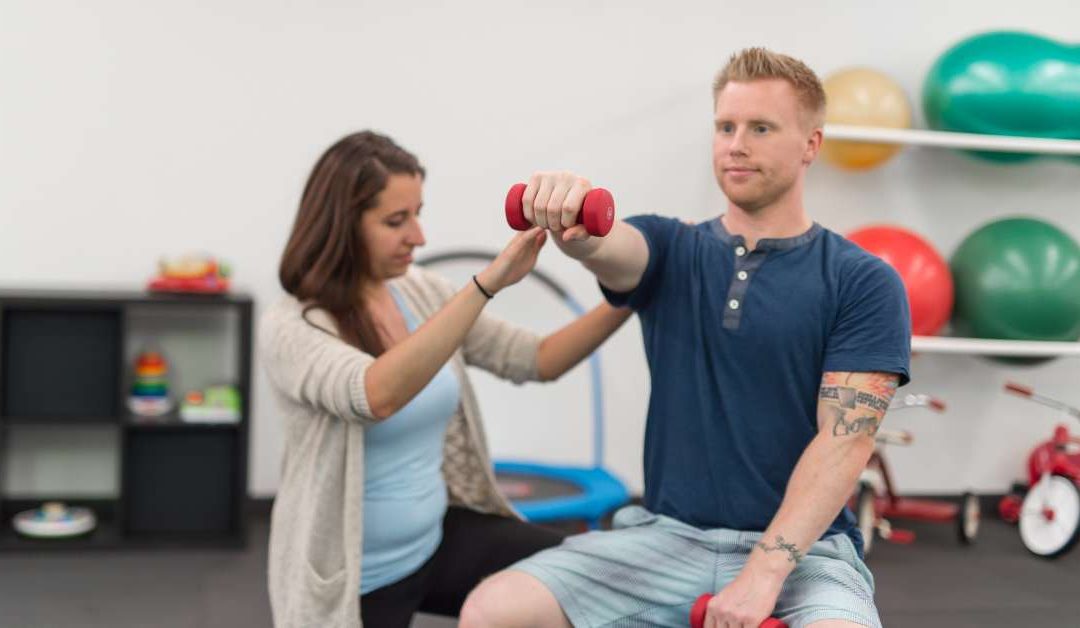Physical therapy for seniors after a fall can make all the difference between losing independence and regaining it. A single fall can shake more than your balance… it can shake your confidence.
For many older adults, recovery isn’t just about healing a bruise or fracture; it’s about regaining trust in their body again. That’s where physical therapy steps in.
With the right plan, seniors can rebuild strength, improve balance, and move without fear.
Whether you’ve recently had a fall or want to prevent another one, working with a physical therapist helps you recover safely and return to the activities that make life enjoyable.
Key Takeaways
Falls can weaken muscles, reduce balance, and create fear that limits independence.
Physical therapy helps seniors rebuild strength, coordination, and confidence after a fall.
Customized exercises restore balance, mobility, and reaction time to prevent future falls.
At Motion Rx, therapists provide one-on-one fall recovery programs to help seniors move safely and regain independence.
The Real Impact of a Fall on the Body and Mind
A fall affects more than just your body. It changes how you move, how you feel, and how much you trust yourself to stay steady. Many seniors begin limiting their activities afterward, not because they can’t, but because they’re afraid of falling again.
That cycle of fear and inactivity often leads to more weakness and a higher risk of future falls. Here’s how a single fall can create lasting effects, and why recovery takes more than rest:
Muscle Loss and Weakness
Even short periods of inactivity after a fall can lead to rapid muscle loss, especially in the legs and core. These are the muscles that help you stand, walk, and maintain your balance. Weakness makes everyday activities, like getting up from a chair or climbing stairs, harder and riskier.
Joint Stiffness and Limited Mobility
When you move less, your joints stiffen, and your range of motion decreases. That stiffness can cause discomfort and make it harder to regain your balance if you lose it again.
Balance and Coordination Decline
Falls often disrupt your body’s natural balance and coordination systems. Without retraining, you may feel off-balance or unsteady, even during simple movements.
Slower Reflexes and Reaction Time
After a fall, the body’s natural “protective reactions” can slow down. You might not react as quickly to regain balance, which increases your risk of another fall.
Emotional Impact and Fear of Falling
Perhaps the most overlooked effect is psychological. Many people develop a deep fear of falling again, which leads to anxiety, isolation, and reduced confidence. Over time, that fear limits independence more than the injury itself.
Reduced Quality of Life
All these changes can make you less active and more dependent on others. Without intervention, it becomes a cycle that weakens both the body and the mind.
The good news is that every one of these effects can be improved through movement. With guided support from a physical therapist, you can rebuild strength, restore balance, and regain confidence in your daily movement.
How Physical Therapy Helps Seniors Recover After a Fall
According to the National Institute on Aging, after a fall, your body needs more than rest. It needs retraining.
Physical therapy focuses on rebuilding what the fall took away: strength, balance, and coordination. It’s not about pushing hard workouts but about rebuilding control and confidence step by step.
A therapist begins by assessing how you move, identifying areas where you have weak spots, tight muscles, and noting any changes in coordination or balance.
They also examine why the fall occurred in the first place; perhaps it was due to poor footing, slower reflexes, or muscle imbalance.
Understanding the cause helps create a recovery plan that prevents it from happening again.
From there, your sessions may include:
- Balance and stability exercises that train your body to react more quickly when you lose your footing, thereby improving coordination and reducing your risk of falls.
- Strength training for your legs, hips, and core to keep you steady when walking, climbing stairs, or standing from a chair.
- Flexibility and mobility drills to ease stiffness and restore natural movement for everyday tasks like bending, reaching, or turning.
- Gait and posture training to correct habits that make you unstable or place uneven stress on your joints.
- Functional training that mimics real-life movements, such as walking outdoors, stepping over obstacles, or getting up from the floor, ensures your strength carries over into daily life.
Each plan is customized to your body, goals, and pace. Over time, these exercises do far more than prevent another fall. They rebuild strength, improve reaction time, and restore trust in how your body moves.
That confidence is what helps you stay active, independent, and safe in the long term.
If you or a loved one is recovering from a recent fall, physical therapy in Jacksonville can help you regain strength and independence safely.
Take the First Step Toward Safer Movement
A fall doesn’t have to mark the end of your independence. With the right support, you can regain balance, strength, and trust in your body.
At Motion RX, we help seniors recover from falls and build lasting confidence through one-on-one, goal-focused care.
If you’ve recently fallen or worry about your stability, don’t wait for another scare. Schedule your physical therapy in Jacksonville today and take the first step toward moving safely and confidently again.
FAQs
What if I’m afraid to move after falling?
That’s completely normal. Many seniors hesitate after a fall because they no longer trust their balance. Physical therapists are trained to help you move safely and rebuild confidence step by step. You’ll start with gentle exercises and progress at a pace that feels right for you.
Can physical therapy help if I use a walker or a cane?
Yes. A therapist can make sure your assistive device is properly fitted and teach you how to use it correctly. Therapy can also help strengthen the muscles that support walking, which may reduce your reliance on mobility aids over time.
How long does recovery usually take?
It varies for each person. Some people start noticing progress after a few sessions, while others need several weeks of consistent therapy. The timeline depends on your injury, overall health, and how consistently you follow your home exercises.
What can I do at home to prevent another fall?
Your therapist will teach you balance and strength exercises you can safely do at home. You can also make small changes, such as removing tripping hazards, wearing supportive shoes, and installing grab bars in key areas. Staying active between sessions helps maintain your progress.



